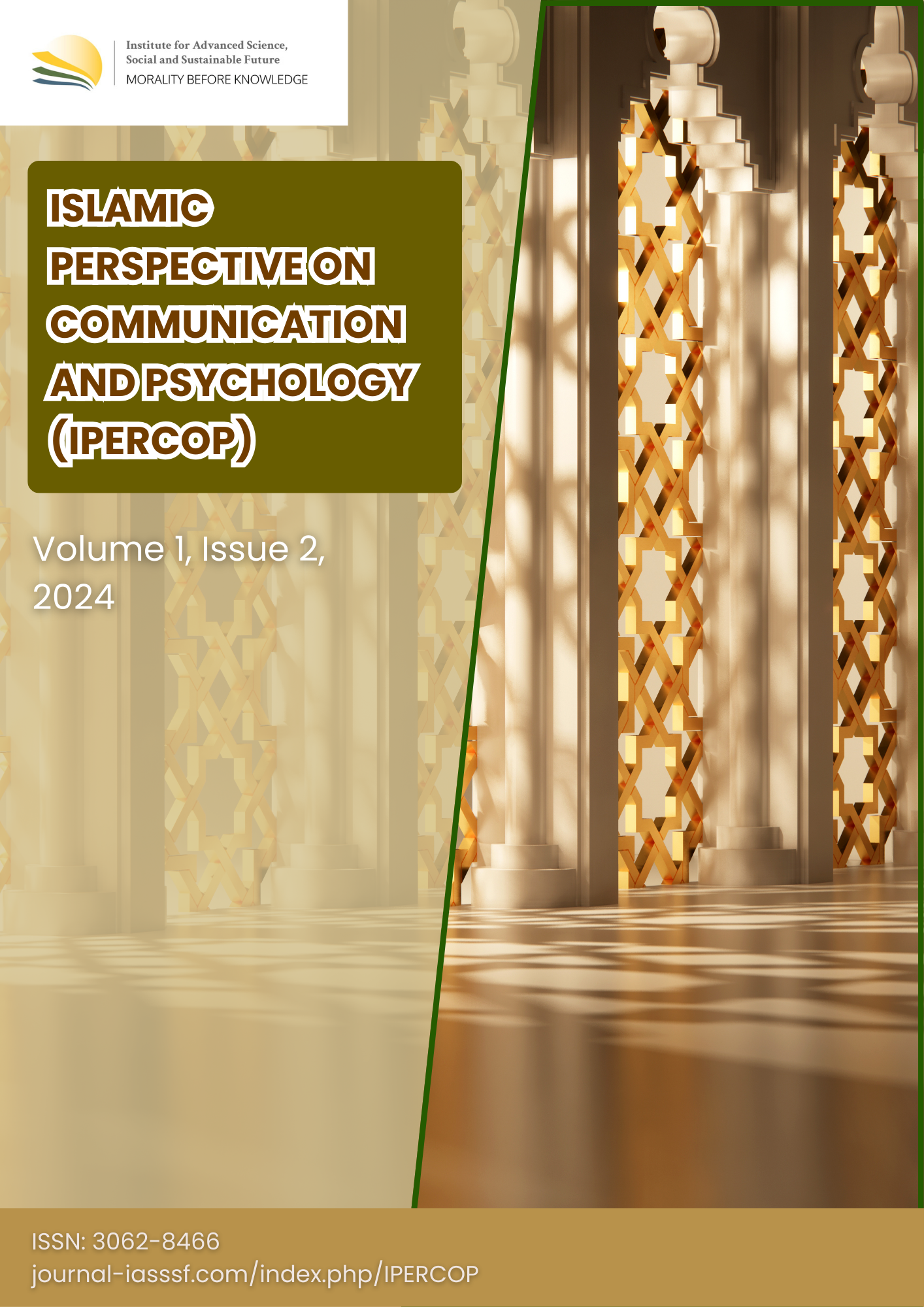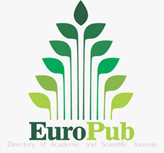Microlinguistic and macrolinguistic approaches to qur'anic learning
DOI:
https://doi.org/10.61511/ipercop.v1i2.2024.1304Keywords:
linguistic approaches, qur'anic learning, qur'anic text comprehension, sociolinguistics, syntax and semanticsAbstract
Background: Qur'anic learning often focuses on the aspects of memorization and literal understanding of the text, without considering linguistic approaches that can enrich interpretation and understanding. This study aims to explore the application of linguistic approaches in Qur'anic learning to improve understanding and interpretation of Qur'anic verses. Methods: The approach used in this study is qualitative analysis by utilizing linguistic theories such as syntax, semantics, sociolinguistics, psycholinguistics, anthropolinguistics, and ecolinguistics. Data were collected through an in-depth literature review on the application of linguistic approaches in Qur'anic learning, as well as case studies illustrating linguistic-based learning practices. Findings: This study found that the application of linguistic approaches in Qur'anic learning can improve understanding of language structure, verse meaning, and the social and cultural context contained in the text. Syntactic and semantic aspects help readers understand the word order and meaning of verses, while sociolinguistic aspects provide insight into the role of language in social and cultural contexts. Conclusion: The application of the linguistic approach in Qur'anic learning contributes significantly to deepening the understanding of the Qur'anic text. This approach allows readers to not only understand the meaning of words, but also capture the broader meaning of Qur'ānic verses, which relates to social, cultural and psychological contexts. Novelty/Originality of this article: This article contributes by integrating various branches of linguistics, including syntax, semantics, sociolinguistics, psycholinguistics, anthropolinguistics, and ecolinguistics, in the context of Qur'anic learning, which has rarely been the main focus in previous studies. This opens up new perspectives in Qur'anic learning methods that are more comprehensive and applicable.
References
Alek, A. (2018). Linguistik Umum. Jakarta: Penerbit Erlangga
Al-Zahrani, A. (2016). The Role of Social Context In The Learning of Al-Quran. International Journal of Islamic Studies, 13(2), 1-15.
Aslinda, A & Syafyahya, L. (2007). Pengantar Sosiolinguistik. Bandung: Rafika Aditama
Bock, K. (1986). Syntactic Persistence In Language Production: A Case For Symbolic Models of Language Production. Cognitive Psychology, 18(4), 457-487. https://doi.org/10.1016/0010-0285(86)90004-6
Chaer, A. (2003). Psycholinguistik: Kajian Teoritik. Jakarta: Rineka Cipta
Danesi, M. (2004). A Basic Course in Antropologi Linguistik. Toronto:Canadian Scholars Press Inc
Dardjowidjojo, S. (2000). Echa: Kisah Pemerolehan Bahasa Anak Indonesia. Jakarta: Grasindo.
Dardjowidjojo, S. (2010). Psikolinguistik: Pengantar Pemahaman Bahasa Manusia. Jakarta: Yayasan Obor
Evans, P. (2008). Language and Identity: A Study of the Yuchi People. PhD Thesis, University of Texas at Austin
Fairclough, N. (1997). Analysis The Critical Study of Language. London: Longman
Fauzi, M. I. (2020). Pemanfaan Neurosains dalam Desain Pengembangan Kurikulum Bahasa Arab. Arabiyatun Jurnal Bahasa Arab, 4(1), 1–20. https://doi.org/10.29240/jba.v4i1.1095
Fillmore, C. J. (1982). Frame semantics. In Linguistics in the Morning Calm (pp. 111-138). John Benjamins Publishing Company
Haugen, E. (1972). The Ecology of Language. Stan Ford. CA: Stanford University Press.
Ismail, T. (2015). Pembelajaran Bahasa Arab Berbasis Fonologi. Bandung: Humaniora.
Kramsch, C. (2000). Language and Culture: An Introduction. Oxford University Press
Kridalaksana, H. (1986). Kelas Kata dalam Bahasa Indonesia. Jakarta: Gramedia.
Maswani. (2022). Bahasa Arab Qur’ani : Model Pembelajaran Bahasa Arab Berbasis Religiusitas pada Orang Dewasa. UIN Syarif Hidayatullah Jakarta.
Nasr, S. H. (2011). The Quranic Worldview: A Springboard for Cultural Reform. Kuala Lumpur: Islamic Book Trust
Nuryani, N & Putra, D. A. K. (2013). Psikolinguistik. Jakarta: Mazhab Ciputat
Nuryani, N & Siti, I. (2021). Sosiolinguistik Dalam Pengajaran Bahasa Berbasis Multikultural: Teori dan Praktik Penelitian. Bogor: In Media
Pateda, M. (1989). Semantik Leksikal. Ende, Flores: Nusa Indah.
Putrayasa, I. B. (2008). Analisis Kalimat: Fungsi, Kategori, dan Peran. Bandung: PT. Refika Aditama
Rahman, F. (1980). Major Themes of the Qur'an. Chicago: University of Chicago Press
Ramlan, R. (1985). Ilmu Bahasa Indonesia Morfologi: Suatu Tinjauan Deskriptif. Yogyakarta: CV. Karyono
Rokim, S. (2020). Akselerasi Pembelajaran Tahfiz Pada Lembaga pendidikan Al-Qur’an ( Studi Di Pondok Pesantren Wadi Mubarak Bogor ). UIN Syarif Hidayatullah Jakarta.
Rorty, R. (1990). Objectivity, Relativism, and Truth Philosophical Papers. Cambridge: Cambridge Universitiy Press
Rosyidi, A. W. (2012). Menengok Kembali Kurikulum Bahasa Arab dan Pembelajarannya. Makalah Pendampingan Guru BA MI, November.
Royani, A., & Mahyudin, E. (2020). Kajian Linguistik. Jurnal Kajian Linguistik Bahasa Arab (Vol. 1, Issue Vol. 2 No 1)
Shihab, M. Q. (2002). Tafsir Al-Misbah: Pesan, Kesan, dan Keserasian Al-Qur'an. Jakarta: Lentera Hati
Sibarani, R. (2004). Antropolinguistik. Medan: Penerbit Poda
Subuki, M. (2011). Semantik: Pengantar Memahami Makna Bahasa. Jakarta: Transpustaka
Sumarsono, S. (2010). Sosiolinguistik. Yogyakarta: Pustaka Pelajar
Verhaar, J. W. M. (2010). Asas-Asas Linguistik Umum. Yogyakarta: Gadjah Mada University Press
Wadud, A. (1999). Qur'an and Woman: Rereading the Sacred Text from a Woman's Perspective. New York: Oxford University Press
Wahab, M. A. (2017). Pengembangan Pendidikan Islam Holistik Integratif Bervisi Pemajuan Peradapan. 1–24. http://repository.uinjkt.ac.id/dspace/handle/123456789/33919
Downloads
Published
Issue
Section
Citation Check
License
Copyright (c) 2024 Islamic perspective on Communication and Psychology

This work is licensed under a Creative Commons Attribution 4.0 International License.















